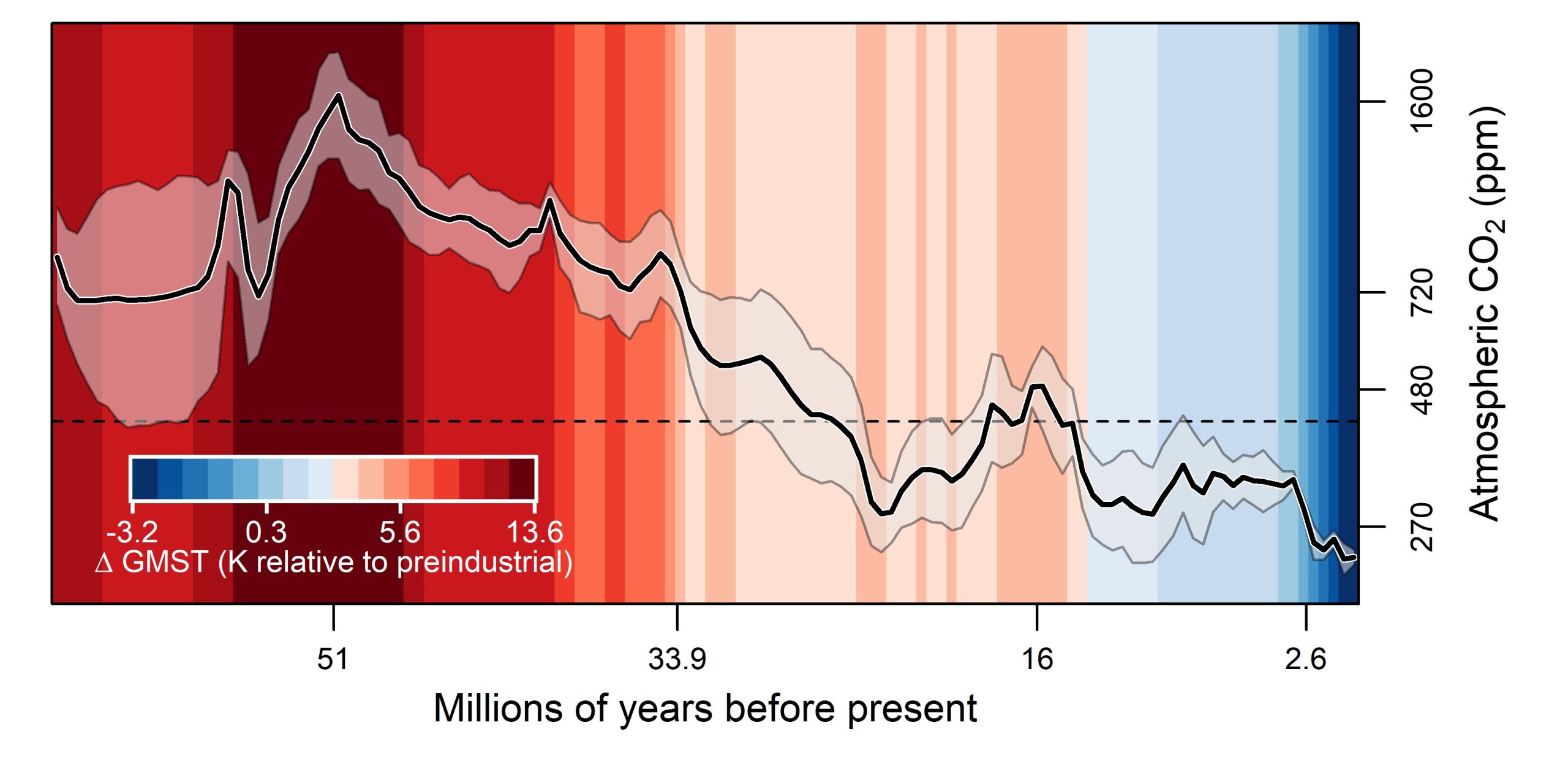
A new study by an international community of scientists reveals that today, atmospheric carbon dioxide is at its highest level in at least several million years thanks to widespread combustion of fossil fuels by humans over the past couple centuries. The study features key contributions by University of Utah geologists and GCSC faculty affiliates Gabe Bowen and Thure Cerling.
Researchers are examining a plethora of markers in the geologic record that offer clues about the contents of ancient atmospheres. Their initial study was published this week in the journal Science, reconstructing CO2 concentrations going back through the Cenozoic, the era that began with the demise dinosaurs and rise of mammals 66 million years ago.
“This represents some of the most inclusive and statistically refined approaches to interpreting CO2 over the last 66 million years,” said co-author Dustin Harper, a U postdoctoral researcher in Bowen’s lab. “Some of the new takeaways are we’re able to combine multiple proxies from different archives of sediment, whether that’s in the ocean or on land, and that really hasn’t been done at this scale.”
Excerpted from an article in At the U. Read the full original piece here.
